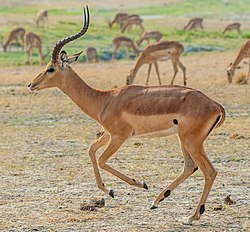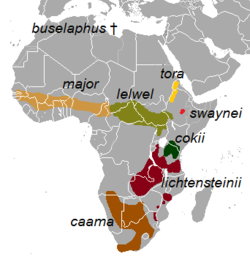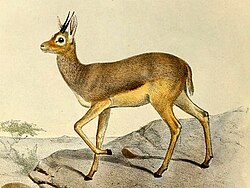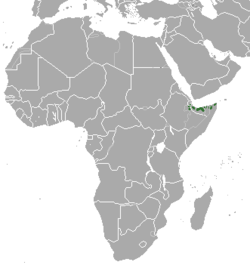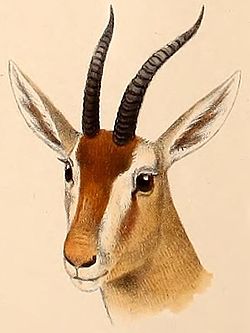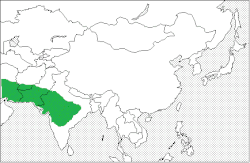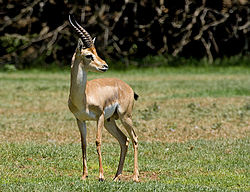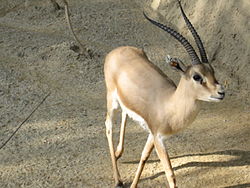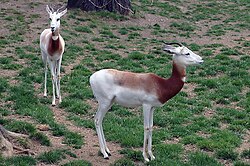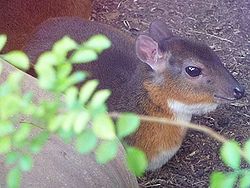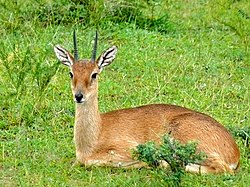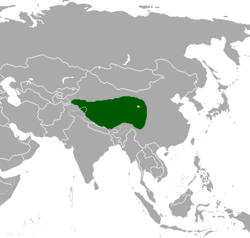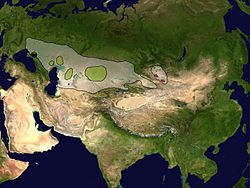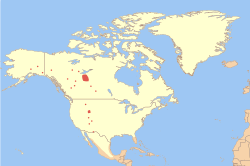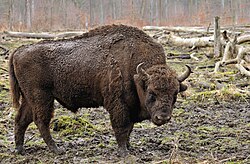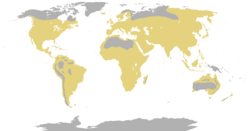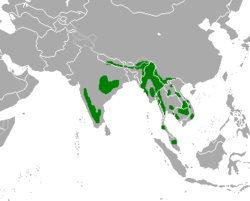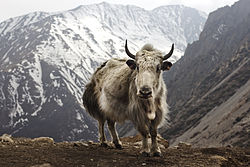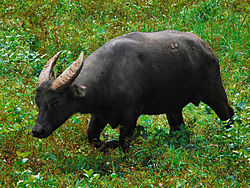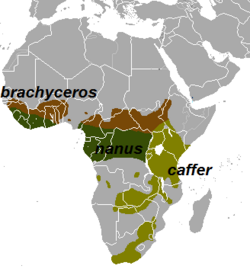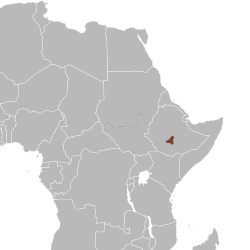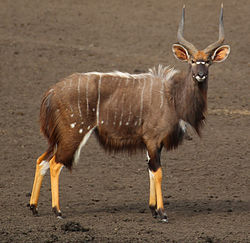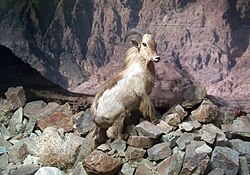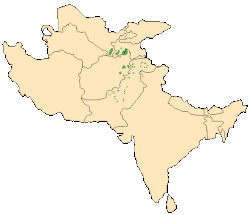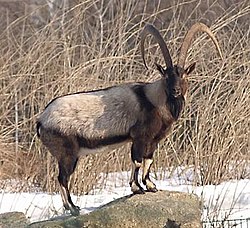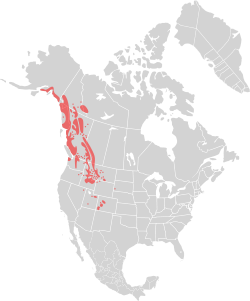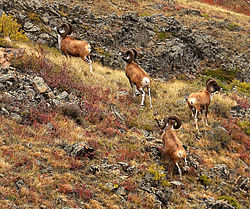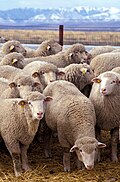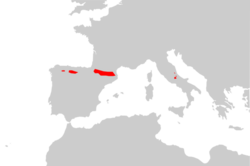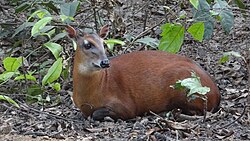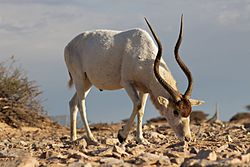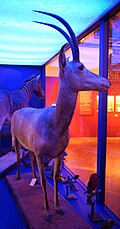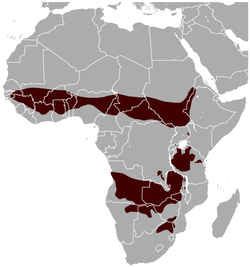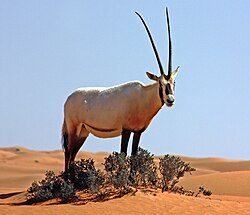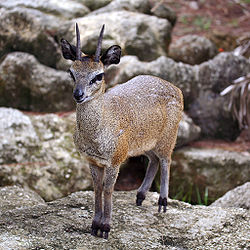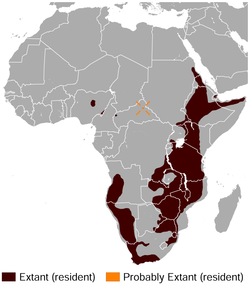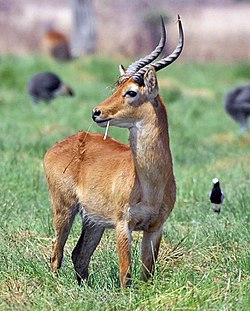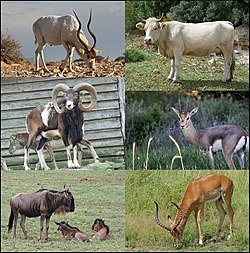
Bovidae is a family of hoofed ruminant mammals in the order Artiodactyla. A member of this family is called a bovid. They are widespread throughout Africa, Asia, Europe, and North America, and are found in a variety of biomes, most typically forest, savanna, shrubland, and grassland. Bovids range in size from the 38 cm (15 in) long royal antelope to the 3.3 m (11 ft) long gaur, which can reach 1,500 kg (3,300 lb) in weight. [1] Over a billion each of domesticated sheep, cattle, and goats, and over 200 million domesticated water buffalo, 14 million domestic yak, and 300,000 domesticated gayal are used in farming worldwide. Many wild species do not have population estimates, though the impala, springbok, and harnessed bushbuck have population sizes of over one million, while several species of bovid are considered endangered or critically endangered with populations as low as 25. One species, the scimitar oryx, was once extinct in the wild, though populations are now recovering. The bluebuck went extinct in the last 200 years, and the aurochs went extinct 400 years ago. A third extinct species, the red gazelle, potentially never existed, [2] and the kouprey is potentially extinct, with no sightings since 1969. [3]
Contents
- Conventions
- Classification
- Bovids
- Subfamily Aepycerotinae
- Subfamily Alcelaphinae
- Subfamily Antilopinae
- Subfamily Bovinae
- Subfamily Caprinae
- Subfamily Cephalophinae
- Subfamily Hippotraginae
- Subfamily Nesotraginae
- Subfamily Oreotraginae
- Subfamily Reduncinae
- Notes
- References
- Sources
The 146 extant species of Bovidae are split into 53 genera within 10 subfamilies: Aepycerotinae, or the impala; Alcelaphinae, containing the bontebok, hartebeest, wildebeest, and relatives; Antilopinae, containing several antelope, gazelles, and relatives; Bovinae, containing cattle, buffalos, bison, and other antelopes; Caprinae, containing goats, sheep, ibex, serows and relatives; Cephalophinae, or duikers; Hippotraginae, containing the addax, oryx, and relatives; Nesotraginae, or dwarf antelopes; Oreotraginae, or the klipspringer; and Reduncinae, or reedbuck and kob antelopes. Extinct species have also been placed into these subfamilies, as well as the extinct Hypsodontinae, Oiocerinae, and Tethytraginae subfamilies. Over one hundred extinct Bovidae species have been discovered, though due to ongoing research and discoveries the exact number and categorization is not fixed. [4]
